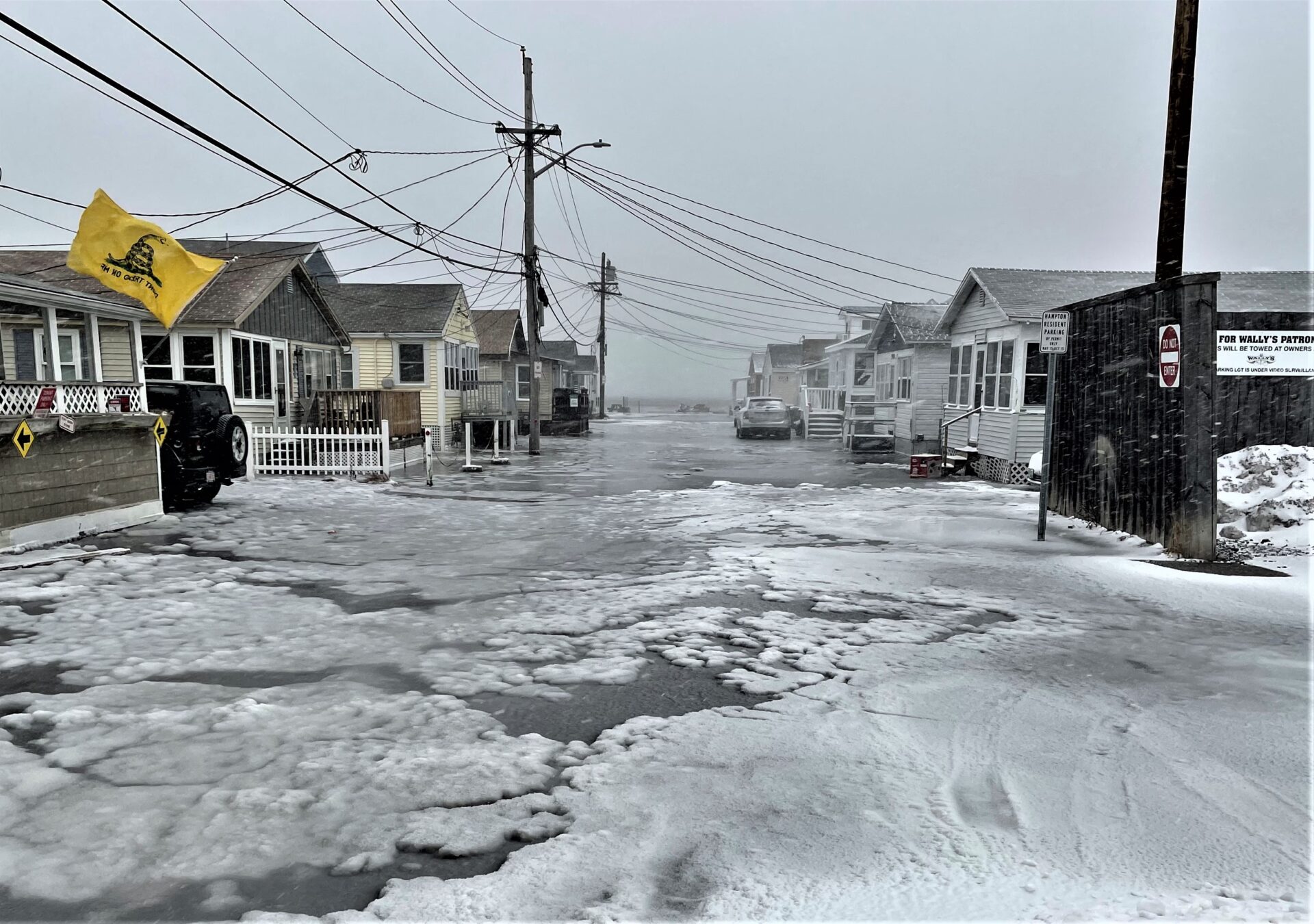By CHUCK GREEN
In upcoming decades, U.S. homeowners in areas along coastlines could be up the proverbial creek.
Sea level rise, along with changing storm patterns, could result in flooding that severely damages homes in many coastal areas. Especially vulnerable, according to estimates, are the Gulf of Mexico, Florida, the Carolinas, and the Washington, DC, area.
In 2018, the Union of Concerned Scientists hoisted warning flags when it released an interactive map that showed the estimated number of homes at risk for chronic flooding in the coming decades due to sea level rise.
That year, the group reported that burgeoning sea level rise – fueled mainly by climate change – was projected to exacerbate tidal flooding in the country. Within 30 years, the lifespan of the typical mortgage, up to 311,000 coastal homes in the lower 48 states were declared at risk of relentless flooding.
By the end of the century? 2.4 million homes, not to mention 107,000 commercial properties could be jeopardized. Among the most exposed real estate was in coastal Florida with an average of 1.8 feet of sea level rise by 2045 and 6.4 feet by 2100.
Bill Sweet, a NOAA oceanographer, who leads its annual high tide flood assessment, says those numbers come from what’s called a high sea level scenario and overall projections show less dramatic changes.
Sweet, also lead author for the U.S. Interagency Sea Level Rise Task Force’s 2017 and 2022 reports, said there could be a national average of perhaps a foot of sea level rise over the next 30 years.
“It depends on where you live and the conditions around you. Some areas, like the Gulf of Mexico, may see more rise, and others, such as the West Coast, less. “Many East and Gulf coast areas are just going to become more exposed, flooded more often for more reasons that are not generally attributable to any localized storm.”
By 2060, Miami is expected to see a 0.98 to 2.27-foot sea level rise. St. Petersburg will see a 1.08 to 2.35-foot sea level rise, according to the Interagency Sea Level Rise Scenario Tool.
Sea level change projections have larger spreads after 2060. For example, the tool shows Galveston, Texas, which is near Houston, will see an 8.2-foot sea level rise by 2100 under a high sea level scenario.
Under a low-level rise scenario, Galveston will see a 2.8-foot rise.
The best thing that communities can do is understand what their current flood risk is and how that’s likely to change, explained Sweet, who owns a home in Annapolis, Maryland.
“Our house is fine. Downtown Annapolis is definitely getting flooded more, as is the Naval Academy,” Sweet said. “We’re really on the front end of this problem. Sea level rise-related impacts are really just starting to emerge. Most of the attention has been in terms of the large, major destructive storms, like hurricane landfalls, that pose a threat. But the lesser extremes, the cumulative effect of high tide flooding, overwhelming stormwater systems, also count.”
Despite predictions, people are determined to call a place home, and for some, buying in a coastal area that is potentially threatened does not stress them out.
Essentially, they figure that if anything’s going down, the ‘other guy’ – not them – will be in the crosshairs.
James Nadeau, a realtor and owner/ instructor with Maine Coast Surveying & Flood Consultants in Portland, Maine, talked with The Mortgage Note about this concept.
“The problem when it comes to any sort of risk with our behavioral blockages, there’s sort of a cognitive dissonance that ‘it won’t happen to us.’ And even though things are happening around people all the time, it’s like walking down the street and thinking you’re never going to get mugged. You walk down the street enough, it’s going to be your turn,” Nadeau said.
Two months after storms ravaged southern Maine and New Hampshire’s coast, high winds and waves caused more damage on March 10. Dozens of homes in Hampton, NH, sustained structural damage as water levels reached 12.34 feet.
Just across the border in Salisbury, Massachusetts, 15,000 tons of sand that had just been trucked in to protect beachfront homes was washed away. With a $600,000 price tag, the failed sand dune project made national news.
“Anytime you have one of these large storms, it overemphasizes the importance of trying to understand concepts of resiliency or mitigation to prepare,” Nadeau said.
There are some ways for people in coastal communities to protect their property.
If they’re willing to throw caution to the wind, Bill Gassett, a realtor with RE/MAX Executive Realty in the Greater Metrowest Massachusetts area, said, “preparedness is essential.”
“They should consider how to delay the impact on the property. Are there natural solutions, such as stabilizing the soil with landscaping such as shrubbery and grasses?” Gassett said.
For existing homes, “the homebuyer will be at the mercy of mother nature and should plan accordingly,” Paul Sian, a realtor with United Real Estate Home Connections in Cincinnati, said.
“If someone’s really is set on buying a coastal home then setting it up to where important things like legal documents and electronics are stored in an area where water damage would not affect them that much would be important,” Sain said.
Flood insurance is also a good idea. Although people may groan about the cost, Joe Rossi, the president and CEO of Joe Flood Insurance Brokerage in Carver, Massachusetts, says property owners are grateful they have it when they need it.
“We see that all the time from both our commercial and residential clients,” Rossi said. “In a loss, I’ve seen insureds are so grateful for coverage that they were compelled to get, since without that, they would have had an uninsured loss.”
Read More Articles:
How Much Should Buyers Put Down On A House?
Cornerstone Servicing President Talks About Retaining Borrowers
Woman To Woman: Female Leaders Offer Advice To Others
Sign up for our free newsletter.
